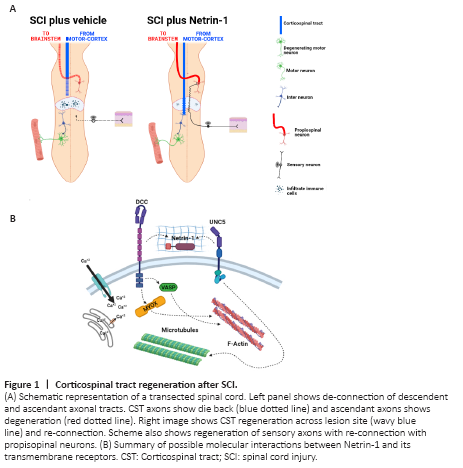脊髓损伤
-
Figure 1|Corticospinal tract regeneration after SCI.

Traumatic spinal cord injuries (SCI) are characterized by damage in the integrity of the spinal cord, which results in either temporary or permanent alterations in the locomotor, sensory and/or autonomic functions (Yezierski, 2009). The traumatic event leads to impairments in voluntary control of movement below the injury by affecting the connection between the brain and the neurons localized in the spinal cord. Therefore, the recovery of locomotor activity is considered one of the main goals in the search of new therapies by the scientists around the world. For many years, axon regeneration has been considered the Holy Grail in SCI research, however, now we know that the regeneration of sectioned axons is necessary but not enough to promote locomotor recovery (Raineteau and Schwab, 2001). The disruption of long motor and sensory axonal tracts as a consequence of the lesion prevents their specific interactions with their cellular targets. For this reason the goal of ongoing investigations is to promote the re-growth of axonal tracts across the lesion site and their re-connection with propiospinal neurons at different segments of the spinal cord (Figure 1A). In particular, regeneration and re-connection of corticospinal tract (CST) axons is of vital significance to regain voluntary locomotor activity after a complete spinal cord injury (Oudega and Perez, 2012). This is because the axons that integrate the CST transmit voluntary motor information to the forelimbs and hindlimbs, and the damage of this structure in humans affects directly the locomotion (Nathan, 1994).
Evidence shows that the molecular pathway of axonal regeneration could involve extracellular calcium influx in response to Netrin-1/Netrin-1 receptors interaction, since this molecular mediator participates in the actin and tubulin cytoskeleton assembly in the growth cone (Figure 1B). Therefore the future work will be oriented to identify the mechanism by which this mediator interacts with voltage-gated calcium and/or TRP channels in response to Netrin-1 treatment.